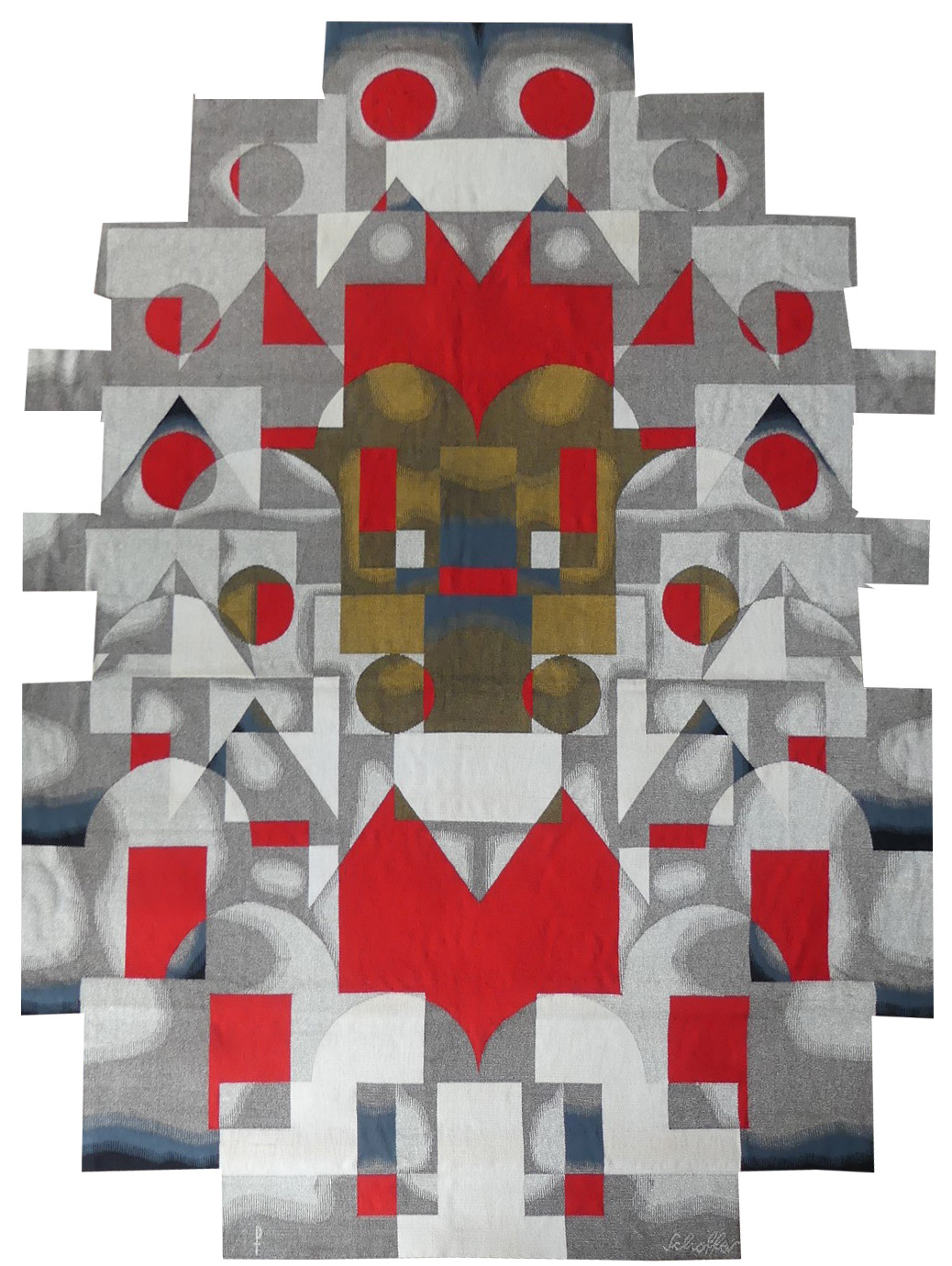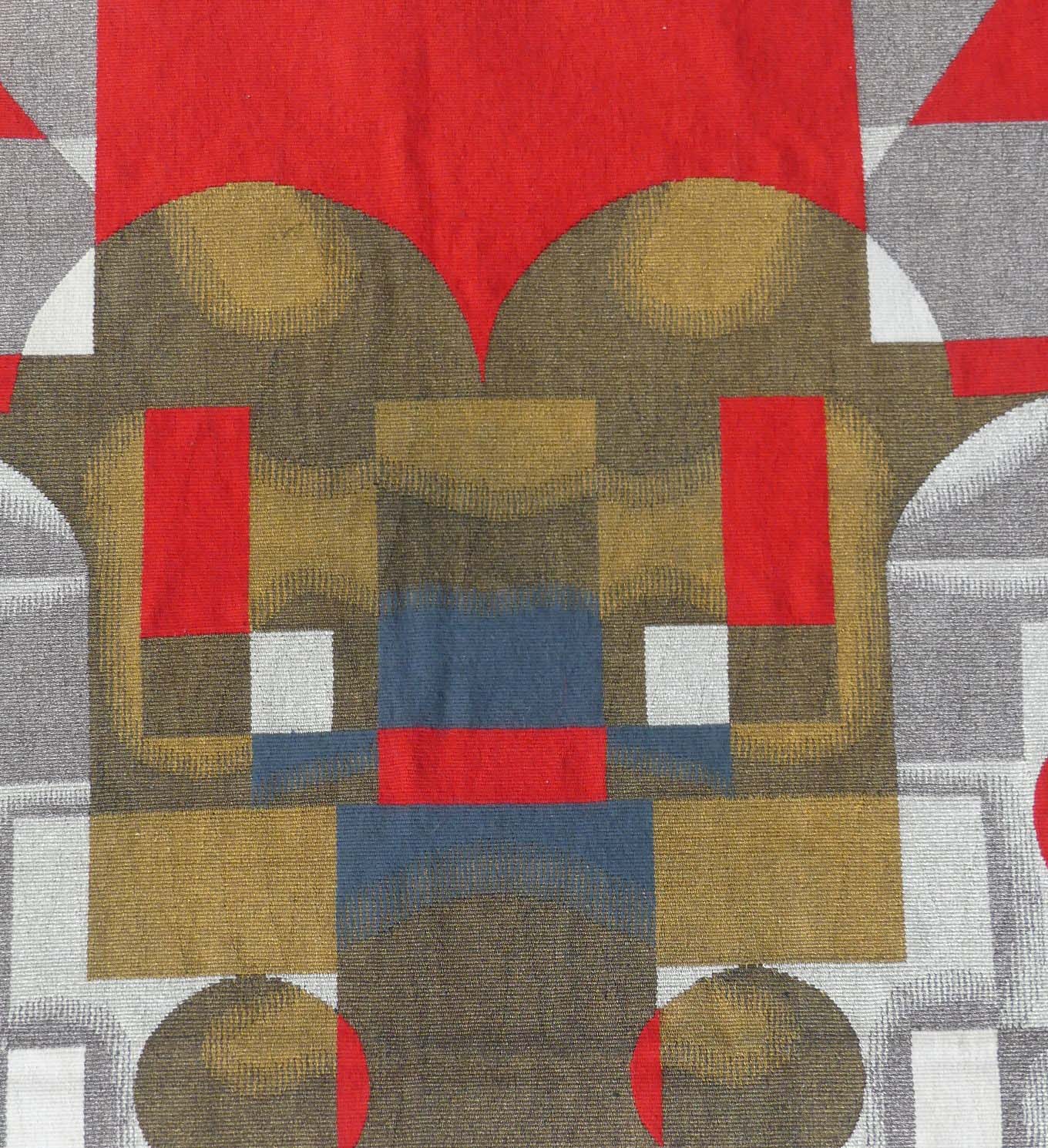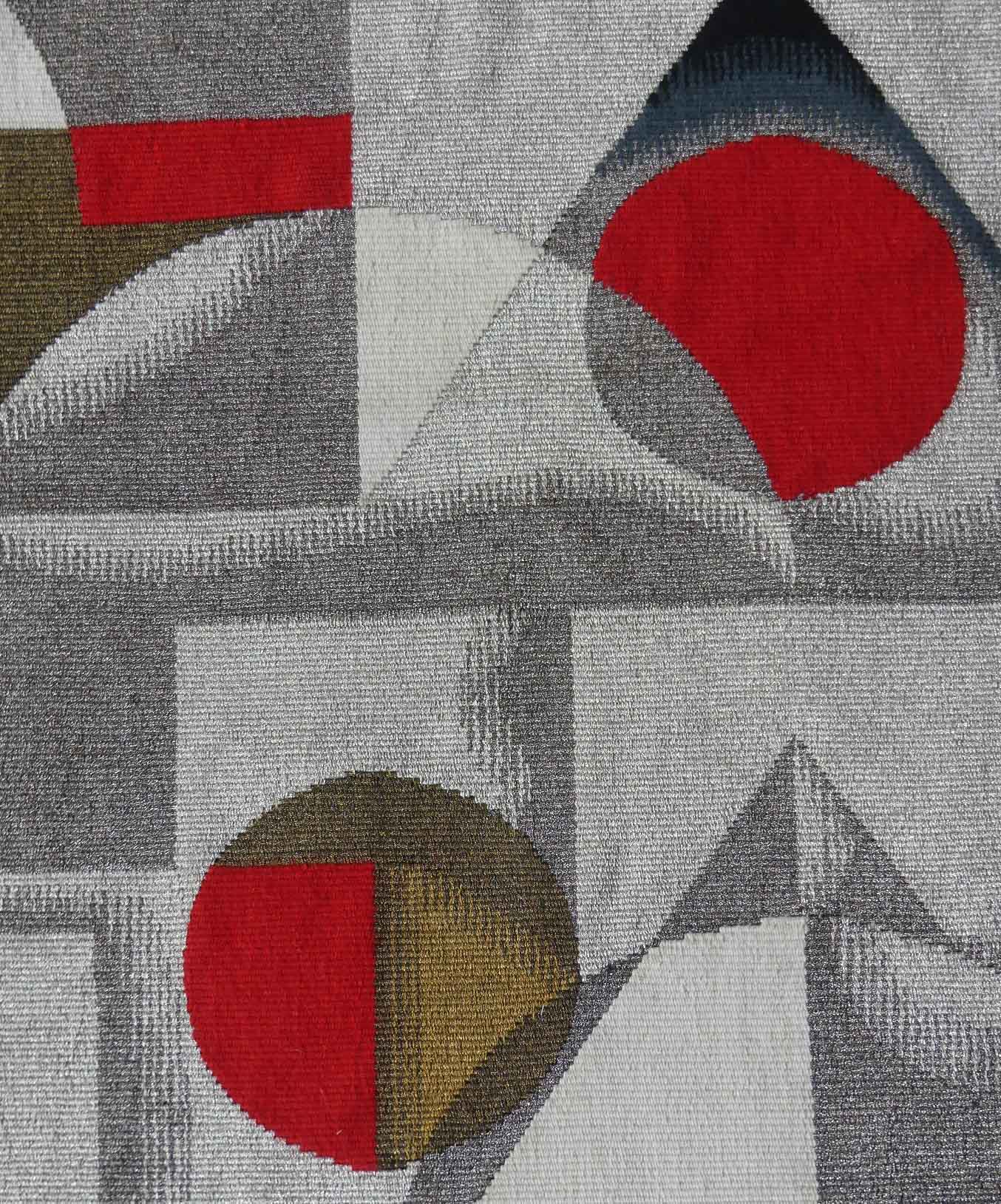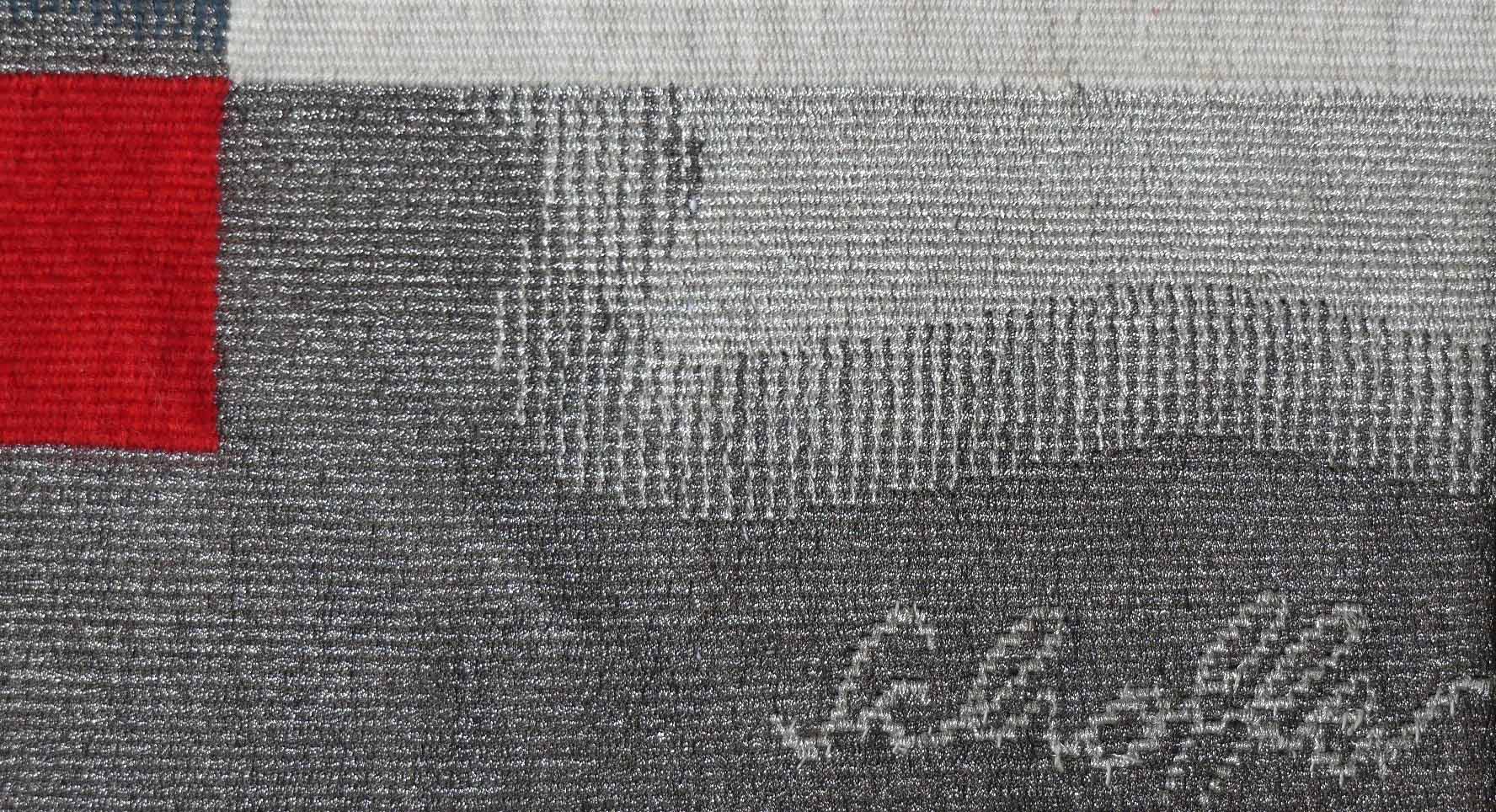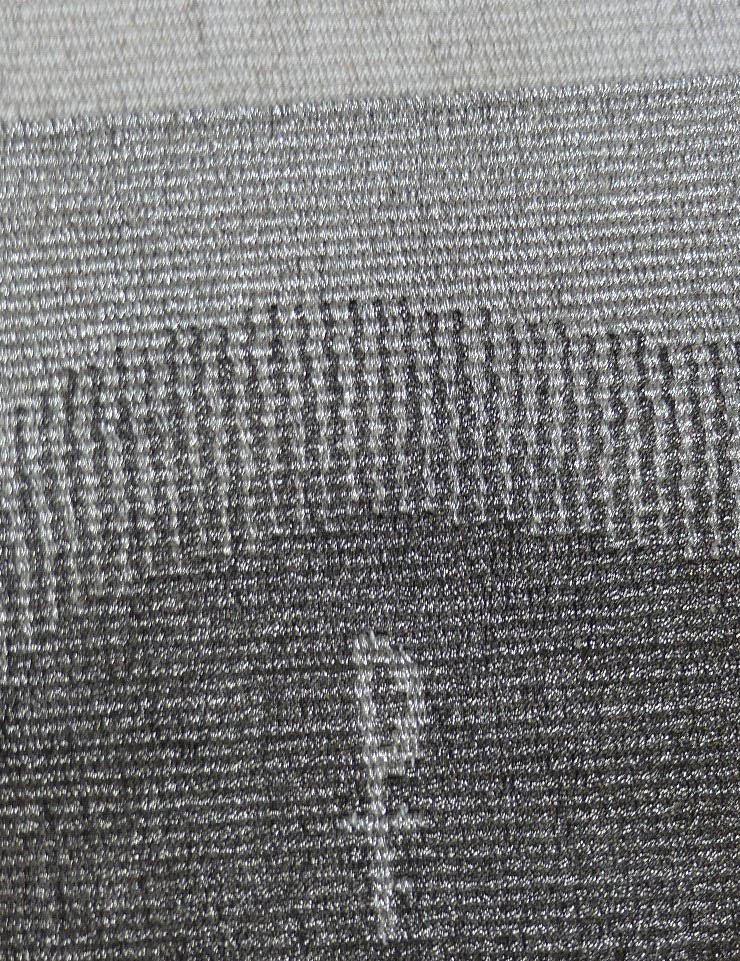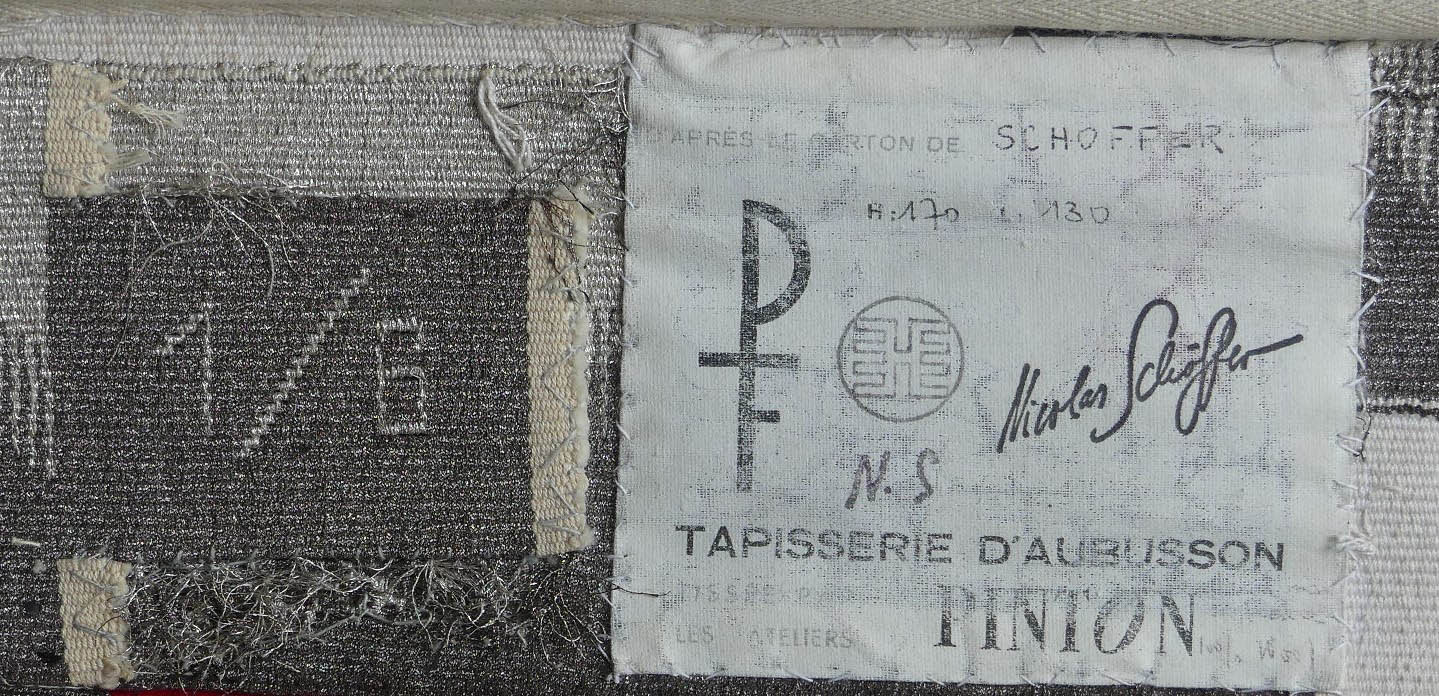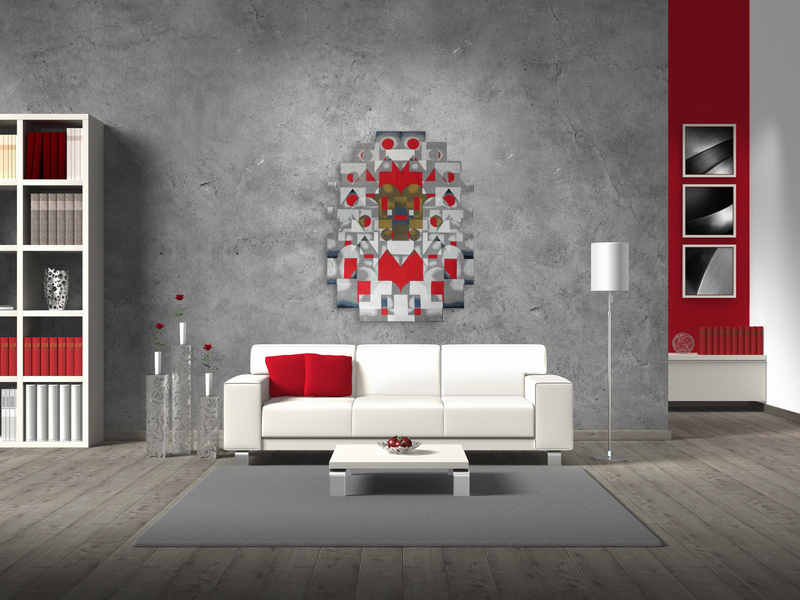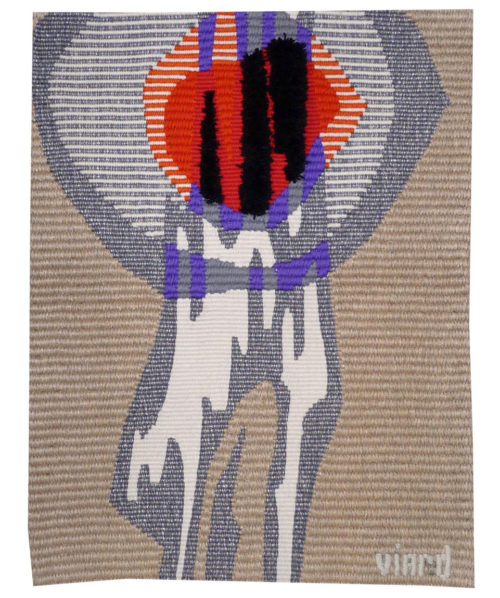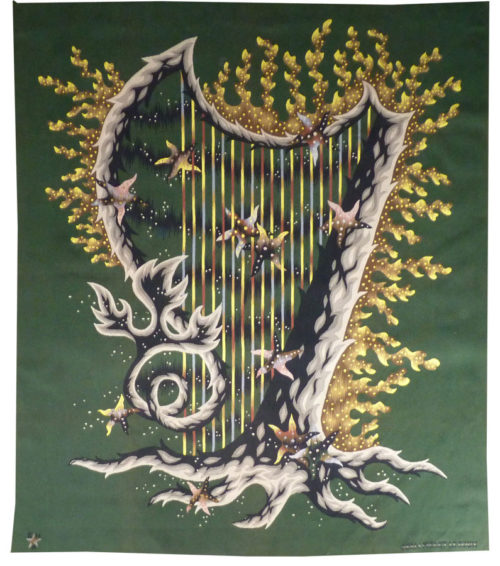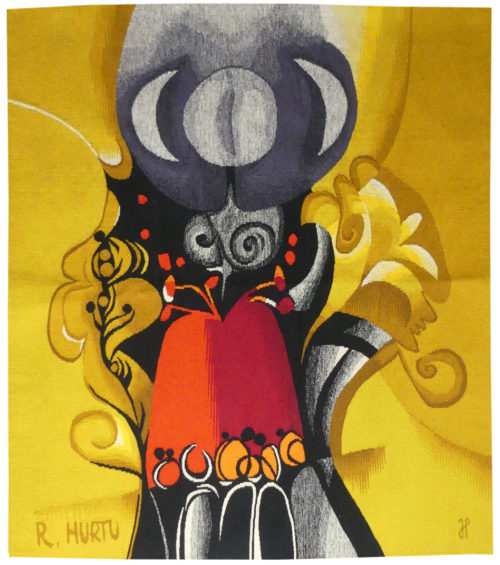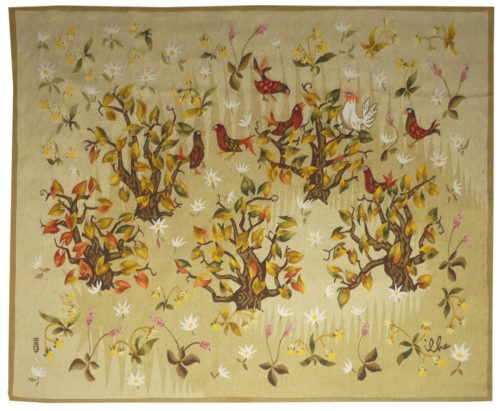Composition
Aubusson tapestry woven in the Pinton workshop.
With label signed with the artist’s stamp, n°1/6.
Circa 1990.
A major actor in the kinetic art movement (and more particularly lumino-kinetic art), the inventor of “spacio-dynamism” which was intrinsically linked to technological innovations and engineering discoveries of the 60’s and 70’s (information technology…), Schöffer is best known for his scaffolding-sculptures, which he would have liked to develop on a grander, architectural scale (a project existed for a tower in the Défense neighbourhood next to Paris). His multidisciplinary pieces (collaborations with Boulez, Barrault and Béjart), his attachment to the idea of “art total”, and the affirmed desire of public bodies of the period to support kinetic and technological art lead to him being sought out by the centre for textile research of the Mobilier National, for whom he would produce “Murlux”, a work of iinterweaving plastic tubes, set in a metal frame, where the effect of light passing through the structure could be explored by the spectator from all angles. This piece would not be followed by further development of the theme but 2 other cartoons were produced by the Manufactures Nationales (“Vartap I and II”), in a rather less challenging optical art style redolent of Vasarely or d’Agam.
This cartoon lies somewhere between the projects described above : the materials used are undeniably associated with the medium (even though there is an abundant presence of metal threads), and the piece is definitely two-dimensional; however, the strips and indentations are a throw-back to the heterogeneous constructions of the artist’s sculptures (even though the underlying principle is one of symmetry) : an exceptional cartoon which is a rare illustration of the work of a profoundly original artist.


